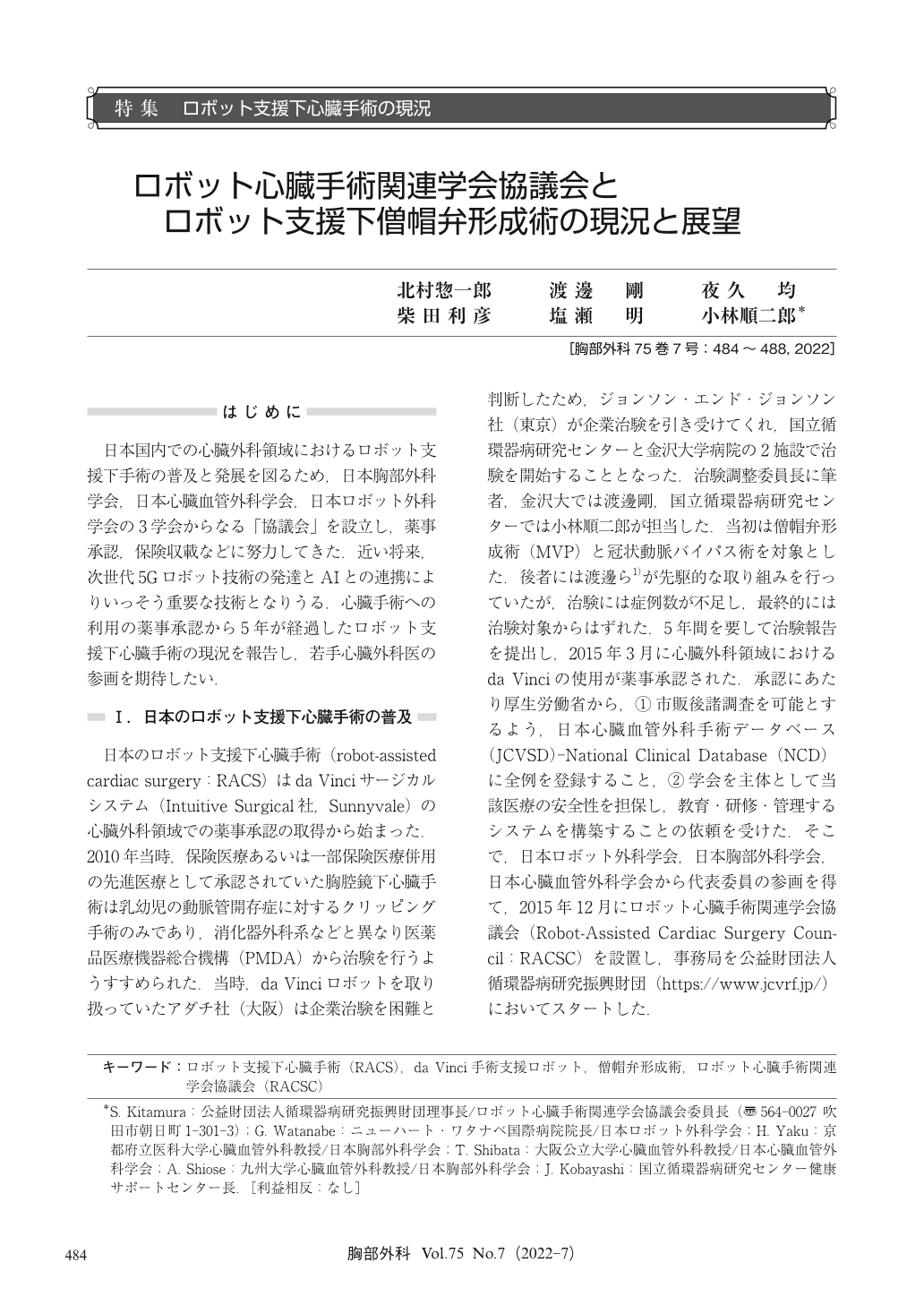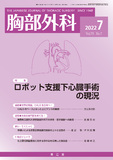Japanese
English
- 有料閲覧
- Abstract 文献概要
- 1ページ目 Look Inside
- 参考文献 Reference
日本国内での心臓外科領域におけるロボット支援下手術の普及と発展を図るため,日本胸部外科学会,日本心臓血管外科学会,日本ロボット外科学会の3学会からなる「協議会」を設立し,薬事承認,保険収載などに努力してきた.近い将来,次世代5Gロボット技術の発達とAIとの連携によりいっそう重要な技術となりうる.心臓手術への利用の薬事承認から5年が経過したロボット支援下心臓手術の現況を報告し,若手心臓外科医の参画を期待したい.
The Robot-assisted Cardiac Surgery Council (RACSC) was established in 2015, and consists of the members of three closely related surgical societies and associations. The RACSC conducts the review and approval of applicant surgeons and institutions. A registry system has also been established through the Japan Cardiovascular Surgery Database-National Clinical Database (JCVSD-NCD). For the last five years, including the time when robotic mitral valve surgery was first approved as a procedure covered by the Japanese social insurance system in 2018, a total of 1,161 patients were enrolled in the JCVSD-NCD, with an increase of nearly 500 cases per year. These cases underwent operations in 25 approved hospitals. The mean patient age was 59±13 years (range:20-90 years), and the male to female patient ratio was 1.8 male dominant. The most common procedure was mitral valve reconstruction, and 79% of all patients underwent annuloplasty. The mean operative time was 238±100 min, the mean cardiopulmonary bypass (CPB) time was 158±69 min, and the mean aortic cross-clamp (AXC) time was 102±49 min. When these results were compared with those of the Cleveland Clinic, which treated more than 1,000 cases as an initial institutional experience, both CPB and AXC times were nearly the same. It is believed that 200 cases are needed to stabilize the CPB and AXC time. Currently in Japan, only 3 or 4 out of the 25 approved hospitals have performed more than 200 cases over the past 5 years. The 30-day hospital mortality and redo operation rate for persisting mitral regurgitation was 0.3% and 0.6%, respectively, almost equivalent to that of the Cleveland Clinic. We believe that the 5-year result for robotic mitral surgery in Japan is acceptable. It is of note, however, that the length of hospital stay was 10.8±7.6 days, much longer than that of patients at the Cleveland Clinic (5.2±2.8 days), and the homologous blood transfusion rate was 40.3%, twofold higher than that of the Cleveland Clinic (20.5%). Therefore, the full benefits of less invasive robotic mitral repair surgery have not yet been achieved. Further improvements in results are both essential and anticipated.

© Nankodo Co., Ltd., 2022


